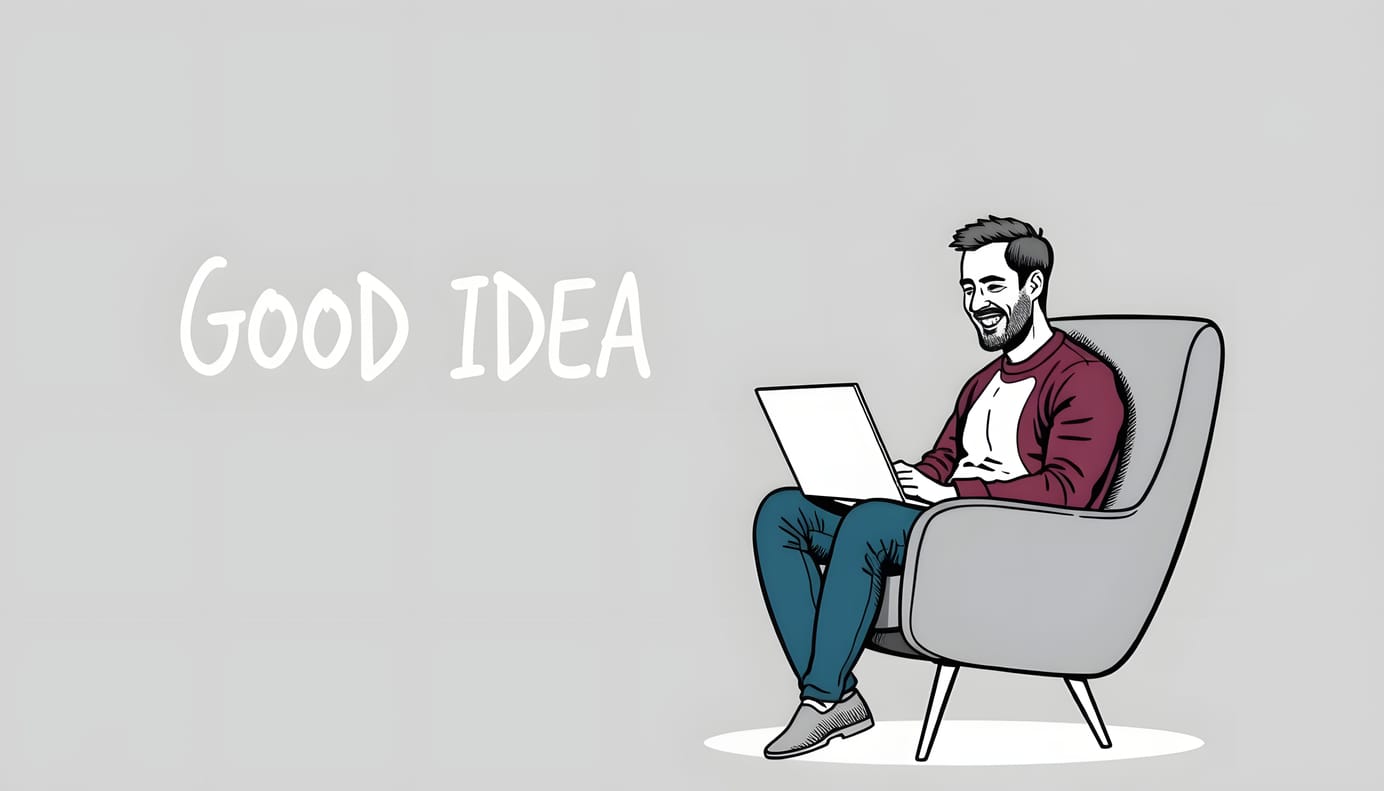Skill Stacking: The Key to Career Resilience

Summary: Learn how to combine what you already know to develop your own personal monopoly.
The old rules of career success no longer apply. If you're a professional in midlife, you can no longer afford to rely on a single job, a predictable career ladder, or a traditional retirement plan-especially if you plan to keep going a decade or two more.
Nowadays, career longevity depends on adaptability, leveraging unique skill combinations, and diversifying income streams to stay competitive in a rapidly changing world.
That's what The Midlife Career Revolution series is all about: helping you rethink career growth, build resilience, and future-proof your work on your own terms.
- Part 1: Learning a New Skill Won't Save Your Career
- Part 2: Skill Stacking: The Key to Career Resilience (You're Here)
- Part 3: The Midlife Portfolio Career Playbook
Share this series with somebody who needs it!
The New Game: Less Accumulation, More Reconfiguration
When was the last time you thought about your career path? Maybe you're questioning how to stay relevant, keep earning, or even reignite your passion.
Here's the truth for professionals in midlife and beyond—the career ladder is disappearing. The traditional idea of climbing one rung at a time in a predictable, linear ascent no longer reflects today’s labor landscape.
Instead, adaptability has become the ultimate currency. Enter skill stacking—a strategy that combines multiple complementary skills to create a competitive edge no one else has.
Whether you’re considering a midlife career pivot, starting a side hustle, or future-proofing your current role, skill stacking might be the wisest investment you’ll make in yourself.
This guide will break down what skill stacking is, why it’s a game-changer for midlife professionals, and how to use it to build career resilience and unlock new income streams.
What Is Skill Stacking?
At its core, skill stacking involves combining moderate proficiency in several skills to create unique value. Unlike traditional "upskilling," which focuses on mastering one new area, skill stacking makes you stand out by blending multiple abilities in ways that are difficult to replicate.
The term gained traction thanks to Scott Adams, the creator of Dilbert, who said, “I’m not a world-class cartoonist, but I’m good at drawing, writing, and business.” The combination of these abilities helped him build a multi-million-dollar career.
Why Skill Stacking Works
The magic of skill stacking lies in its flexibility. You don’t have to be the best at one thing.
Instead, being in the top 25% of three to five skills offers a competitive advantage that’s nearly impossible to copy.
For midlife professionals, this unlocks opportunities such as:
- Reinvention without starting over: Leverage your existing experience by blending it with new complementary skills.
- Resilience in a changing job market: Stay ahead of automation and shifting industry demands by diversifying your capabilities - again and again.
- Income diversification: Use your stacked skills for freelancing, consulting, or launching your own business.
- Future-proofing your career: Position yourself as agile and indispensable in an evolving workplace.
"I'm not a world-class cartoonist, but I'm good at drawing, writing, and business." - Scott Adams
Examples of Skill Stacking
Skill stacking allows you to combine what you already know to create unique and exciting career opportunities. By blending complementary skills, midlifers can stay competitive, adapt to change, and unlock new income streams.
Here are some actionable examples of skill stacking for midlife professionals:
- Thought leadership: Corporate Leadership Experience + Public Speaking + Content Creation
- Career Coaching Business: HR/Recruitment + LinkedIn Strategy + AI Tools
- Personal Finance Blog: Finance + SEO Expertise + Blogging
- Online Coaching Business: Coaching + Writing + Digital Marketing
- Online Wellness Business: Writing + Course Creation + Digital Health
- Legal Podcast/Advisory Services: Legal Background + Podcasting + Personal Branding
- High-Ticket Consulting: Sales + Storytelling + Personal Branding
- Productivity Consulting: Business Operations + AI + Workflow Automation
- Influencer: Public Speaking + Video Creation + Online Monetization
- Authority Blog: Freelancing + Niche Industry Knowledge + SEO
- E-Commerce: Product Sourcing + Web Design + Paid Advertising
- Real Estate: Negotiation + Property Evaluation + Marketing
How to Stack Your Skills in Unique Ways
By now, you know that thriving in today's career landscape isn't about clinging to a single job title or narrowly focused expertise.
True career security comes from adaptability—the ability to pivot, evolve, and create new opportunities. And that's where skill stacking comes in.
Unlike young professionals who have the luxury of time to build new skills from scratch, midlife is about working smarter, not harder. It's about reconfiguring your existing expertise and layering in high-value, modern skills that open doors.
This isn’t about randomly taking online courses or chasing trends. You'll need to think strategically—aligning complementary skills in a way that builds on your strengths, ignites your passions, and positions you as indispensable in today’s rapidly changing world.
If you do this, the payoff is potentially huge. You'll have a unique skill stack that boosts your resilience, diversifies your income streams, and unlocks future-proof opportunities—whether through freelancing, entrepreneurship, consulting, or growth in your existing career.
Building your unique skill stack doesn't require massive change or years of schooling. You're just making small, intentional steps. Here's how to start refining and leveraging your expertise today.
1. Build Your Personal Monopoly
Dave Perell's concept of Personal Monopoly changed my mindset forever. Once you learn how to do this, you'll think very differently about how to differentiate yourself.
Here's how David defines it:
Your Personal Monopoly is your unique intersection of skills, interests, and personality traits where you can be known as the best thinker on a topic...
One of the most empowering aspects of skill stacking is that it allows you to become truly unique in your field. You can create your personal monopoly—a one-of-a-kind combination of skills, experiences, and insights that no one else can replicate.
Why is this a game-changer?
- Less Competition: No one else brings your exact mix of expertise to the table.
- Higher Earning Potential: Your unique skill set transforms you into a premium professional, offering rare value.
- Career Resilience: You become indispensable in an era where automation and constant disruption threaten traditional roles.
Think about it this way—when you blend your midlife expertise in HR with emerging AI skills or combine corporate leadership experience with the art of content creation, you transform from “just another professional” into the go-to person in your space.
You redefine the game, no longer competing on credentials or price—you create the niche only you can fill.
2. Assess Your Current Skill Stack
Before you stack skills, it’s crucial to determine what you already have. Your current assets are more expansive than you might think.
Key Categories to Assess
- Professional Skills: Think beyond your job title. Are you skilled in coaching, managing, writing, or strategic thinking?
- Hobbies & Interests: Your side passions—whether fitness, gardening, or photography—can be valuable.
- Credentials & Education: Include all certifications, degrees, licenses, and learning experiences.
- Network & Relationships: Past colleagues, mentors, or industry connections can amplify your skill stack.
- Unique Experiences: Career transitions, relocations, or entrepreneurship teach skills formal education can’t.
- Reputation: Your LinkedIn presence, personal brand, or media coverage provide tangible credibility.
💡 Action Item: List your current skills, experiences, and resources. This becomes the foundation for what you’ll build on.
3. Identify High-Leverage Skill Gaps
The best skill stacks come not from collecting random skills but from identifying missing links that could amplify your strengths.
How to Identify High-Impact Gaps
- Self-Assessment: What skills would take your career to the next level?
- Observe Others: Study what makes successful people in your target field unique.
- Collaborate: Find partners whose skills complement yours.
- Experiment: Test out skills through small projects (more on this in Step 3).
Examples of Skill Combinations
Here are some sought-after skills that pair well in most industries:
- Digital Fluency: Learn the basics of AI tools, no-code platforms, or automation.
- Marketing: Understand SEO, content strategy, and personal branding.
- Sales & Negotiation: Sharpen your persuasion and storytelling skills.
- Public Speaking: Host webinars or deliver clean, engaging presentations.
- Finance & Investing: Explore personal finance, crypto, or alternative investments.
💡 Example: An HR manager who adds skills in public speaking and LinkedIn strategy can transform into a thought leader—opening doors to consulting or speaking engagements.
4. Build Skills Through Small Bets
Skill stacking isn’t about earning a whole new degree. The most effective way to add skills is through small, low-risk experiments instead of all-out commitments.
How to Take Small Bets
- Write a blog post that combines your expertise with a new skill (e.g., “HR Meets AI Trends”).
- Host a free webinar or publish a one-page website to test interest in an idea.
- Take a short online course and apply your learnings immediately.
- Post consistently on LinkedIn for 30 days to refine your personal brand.
- Offer a free consultation in a new area to gather insights and test demand.
💡 Pro Tip: Start with free or low-cost tools like Udemy, Coursera, or LinkedIn Learning to explore unfamiliar skills before committing further. . Identify High-Leverage Skill Gaps
5. Increase Visibility to Accelerate Opportunities
Stacked skills create value—but only if others know about them. The more visible you are, the greater your chance of attracting unexpected opportunities.
How to Boost Your Visibility
- Create Content: Publish blogs, LinkedIn posts, or YouTube videos sharing your insights.
- Public Speaking: Participate in webinars or guest appearances on podcasts.
- Engage Online Communities: Join active discussions on Reddit or Slack.
- Collaborate: Partner with peers on joint projects to increase exposure.
💡 The Cocktail Party Effect: The more places people encounter your expertise, the more random but meaningful opportunities—like job offers or consulting gigs—you’ll receive.
6. Monetizing Your Skill Stack
Many midlifers worry about the financial risks of career pivots. But skill stacking allows gradual monetization while keeping your income steady.
Monetization Ideas for Midlife Professionals
- Freelancing: Offer expertise in the unique skills your stack combines.
- Consulting: Create tailored advice packages based on your background.
- Courses & Workshops: Teach others how to build skills you’ve mastered.
- Paid Subscriptions: Launch a newsletter or podcast around your niche.
- Speaking Engagements: Get paid to speak about your unique combination of skills.
💡 Example: A midlife executive can start by writing LinkedIn content on leadership trends, host free webinars to build credibility, and eventually monetize through coaching or speaking gigs.
Final Thought - Overcoming Barriers
It's natural to feel overwhelmed when trying something new, especially in midlife. Here’s how to reframe common mental blocks:
- "I’m too old to learn." → Reality check: You’re never too old to grow. Many leaders pivot careers at 50 or beyond.
- "I don’t want to start over." → Reminder: Skill stacking builds momentum without abandoning your existing expertise.
- "I’m not tech-savvy." → Tip: Basics like AI tools or digital platforms require minimal learning time.
Redefine Success - One Skill at a Time
The ability to adapt beats expertise in today’s nonlinear career landscape. Stop chasing the "perfect" skill and start building a dynamic portfolio of complementary abilities through skill stacking. This strategy not only protects your career from future disruptions but also empowers you to shape your professional life on your terms.
What’s Next?
Future-proofing doesn’t stop here. Want to supercharge your career reinvention? Stay tuned for Part 3 of our Midlife Career Revolution series, where we’ll share the ultimate guide to building a thriving portfolio career.






